
The American Ornithological Society (AOS) is an ornithological organization based in the United States. The society was formed in October 2016 by the merger of the American Ornithologists' Union (AOU) and the Cooper Ornithological Society. Its members are primarily professional ornithologists, although membership is open to anyone with an interest in birds. The society publishes the two scholarly journals, The Auk and The Condor as well as the AOS Checklist of North American Birds.
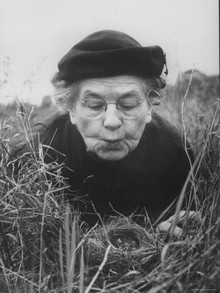
Margaret Morse Nice was an American ornithologist, ethologist, and child psychologist who made an extensive study of the life history of the song sparrow and was author of Studies in the Life History of the Song Sparrow (1937). She observed and recorded hierarchies in chicken about three decades ahead of Thorleif Schjelderup-Ebbe who coined the term "pecking order". After her marriage, she made observations on language learning in her children and wrote numerous research papers.
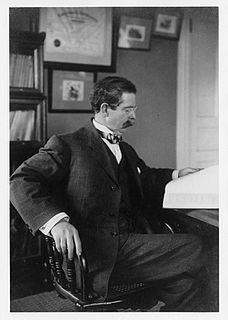
Robert Ridgway was an American ornithologist specializing in systematics. He was appointed in 1880 by Spencer Fullerton Baird, secretary of the Smithsonian Institution, to be the first full-time curator of birds at the United States National Museum, a title he held until his death. In 1883, he helped found the American Ornithologists' Union, where he served as officer and journal editor. Ridgway was an outstanding descriptive taxonomist, capping his life work with The Birds of North and Middle America. In his lifetime, he was unmatched in the number of North American bird species that he described for science. As technical illustrator, Ridgway used his own paintings and outline drawings to complement his writing. He also published two books that systematized color names for describing birds, A Nomenclature of Colors for Naturalists (1886) and Color Standards and Color Nomenclature (1912). Ornithologists all over the world continue to cite Ridgway's color studies and books.
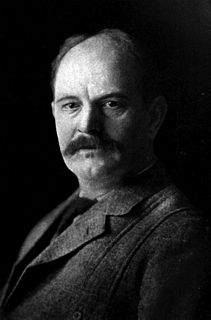
Frank Michler Chapman was an American ornithologist and pioneering writer of field guides.
John Todd Zimmer was a leading American ornithologist.
Constantine Walter Benson OBE was a British ornithologist and author of over 350 publications. He is considered the last of a line of British Colonial officials that made significant contributions to ornithology.
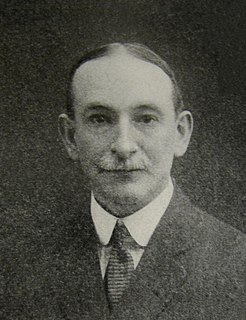
Witmer Stone was an American ornithologist, botanist, and mammalogist, and was considered one of the last of the “great naturalists.” Stone is remembered principally as an ornithologist. He was president of the American Ornithologists’ Union (AOU) 1920–23, and was editor of the AOU's periodical The Auk 1912–1936. He spearheaded the production of the 4th edition of the AOU checklist, published in 1931. He worked for over 50 years in the Ornithology Department at the Academy of Natural Sciences of Philadelphia, eventually serving as Director of the institution. Stone was one of the founding members of the Delaware Valley Ornithological Club (DVOC) in 1890 and was actively involved in the organization for the remainder of his life. Stone was one of only two scientists to serve as president of both the AOU and the American Society of Mammalogists, and he co-authored two popular books about mammals. His outstanding botanical contribution was The Plants of Southern New Jersey, published in 1911. Stone spent many summers at Cape May, New Jersey, summering there annually starting in 1916. He is best remembered for his two-volume classic Bird Studies at Old Cape May, which was published by the DVOC in 1937, two years before his death.
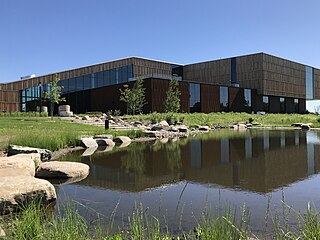
The Bell Museum, formerly known as the James Ford Bell Museum of Natural History, is located at the University of Minnesota. The museum's new location on the St. Paul campus opened July 13–15, 2018. The world-renowned Minnesota wildlife dioramas, numerous animal specimens from all over the world, and the 120-seat digital Whitney and Elizabeth MacMillan Planetarium theater are highlighted features of the new facility. The museum's former location in Minneapolis is closed as the work to move to the University of Minnesota's St. Paul campus began in January 2017. The museum is part of the University's College of Food, Agricultural and Natural Resource Sciences.
Charles Foster Batchelder was an American ornithologist and naturalist. He was an early member and President of the American Ornithologists' Union, and of the Nuttall Ornithological Club. He also edited The Auk, and before it, the Bulletin of the Nuttall Ornithological Club.

Viktor von Tschusi zu Schmidhoffen was an Austrian ornithologist.

Richard Charles Banks, Ph.D. is an American author, ornithologist and Emeritus Research Zoologist on staff with the Patuxent Wildlife Research Center run by the U.S. Geological Survey and stationed at the Smithsonian Institution in Washington, DC. He is the founder of the Ornithological Council and known for his study of the migratory systems, patterns, and geographic variations of North American birds, primarily focusing on the research and analysis of white-fronted geese.

Robert Wilson Shufeldt was an American osteologist, myologist, museologist and ethnographer who contributed to comparative studies of bird anatomy and forensic science. He held strong views on race and was a proponent of white supremacy. A scandal and subsequent divorce from his second wife, the granddaughter of the famous ornithologist John James Audubon, led to a landmark judgment by the Supreme Court of the United States of America on the subject of alimony and bankruptcy.

John Weaver Fitzpatrick is an American ornithologist primarily known for his research work on the South American avifauna and for the conservation of the Florida scrub jay. He is currently the Louis Agassiz Fuertes Director of the Cornell Lab of Ornithology in Ithaca, New York.
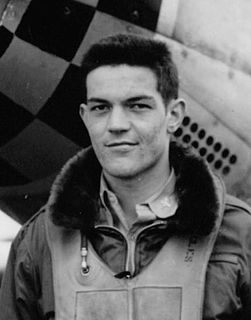
Harrison Bruce "Bud" Tordoff was an American ornithologist and conservationist. He was brought up in Mechanicville in upstate New York, hunting and fishing, and became interested in wildlife management and zoology. He studied as an undergraduate at Cornell University, returning to complete his degree after a period of military service during World War II. He had served as a fighter pilot in the United States Army Air Forces, and his five confirmed aerial victories qualified him as a fighter ace.
(Mary) Emma Roberts (1859–1948) was an artist and visual arts educator who worked primarily in Minneapolis, Minnesota. She produced watercolor paintings of plants and flowers, was one of the cofounders of the city's Handicraft Guild and also worked as an arts educator in the Minneapolis Public Schools.
George Hines Lowery Jr. was an American ornithologist and professor of zoology at Louisiana State University, who pioneered a technique for studying nocturnal bird migration by large-scale observation through telescopes across the United States of America of flocks of birds as they flew at night in front of the face of the moon.
Emma Gertrude Cummings was an American horticulturalist and ornithologist.

The Thomas Sadler Roberts Bird Sanctuary is situated within Lyndale Park, a Minneapolis city park on the northeast side of Lake Harriet and part of Minneapolis’ Chain of Lakes Regional Park. The main entrance to the sanctuary is in the Lyndale Park Gardens parking lot. Trailheads are accessible through the back of the Peace Garden, and from the parking lot northeast of the Lake Harriet bandshell.
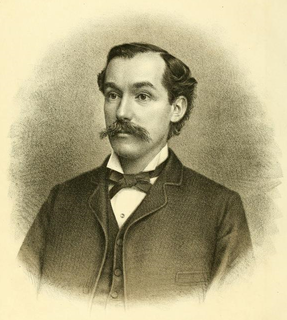
Thomas George Gentry was an American educator, ornithologist, naturalist and animal rights writer. Gentry authored an early work applying the term intelligence to plants.
David Frank McKinney (1928–2001) was a British-born ornithologist and ethologist, who worked in Canada and the USA and specialized in the social behavior of waterfowl.













